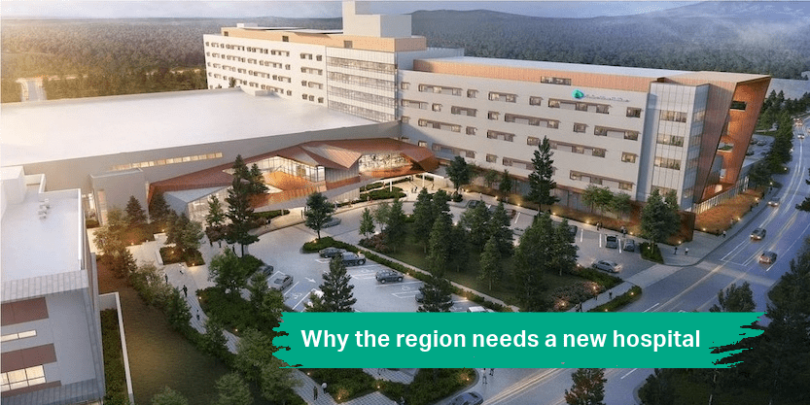Northern Arizona is growing in population and it would be irresponsible to wait until that growth overwhelms the health care system before we begin planning to expand in order to meet that need.
Northern Arizona Healthcare (NAH) serves the entire region of 50,000 square miles with approximately 800,000 people. FMC serves a vital role for the whole region. While there are other community hospitals in this region, Flagstaff Medical Center (FMC) is the only Level I Trauma Center north of Phoenix, serving not only those who live in the region but also the millions of tourists who travel here throughout the year. FMC is the tertiary referral center for most of those community hospitals, and the only facility in the region that has consistent services for neurosurgery, open heart surgery, inpatient pediatrics, a Pediatric Intensive Care Unit (PICU), and advanced nursery capabilities, which will be upgraded to a Neonatal Intensive Care Unit (NICU) at the new campus. About 60% of FMC’s admissions come from the outside of the Flagstaff Metro area.
With that growth comes a lot of opportunity and responsibility. One of the responsibilities NAH is directly aiming to address are social determinants of health. There are many factors beyond direct health care that can influence a community’s health factors, including whether there are affordable housing options for the average wage earner and whether there’s economic vitality such as smart job growth. While NAH partners with other organizations to work on these factors, we are the only organization providing a hospital and trauma center to meet the needs of the region. We are the only organization thinking about what the health care of the region needs to look like today and for decades to come.
As health care providers, it would be careless to wait until the population grows at the projected rate before we build a hospital that can be responsive to the population today and the expanded population of the future. Waiting to plan for the increased population until after the growth begins will only cause delays in care for those who already live here and who need access to care now.
